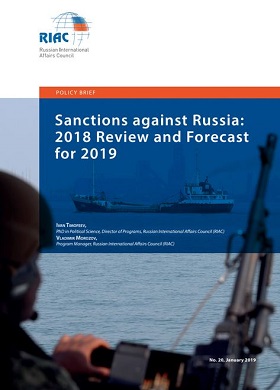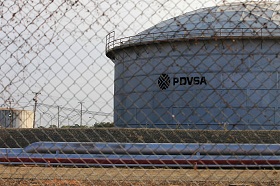US President Donald Trump has extended Executive Order #13660 of 6 March 2014, titled “Blocking Property of Additional Persons Contributing to the Situation in Ukraine.” The document was signed by Barack Obama and since then has been renewed annually. This was the first decree to introduce sanctions against Russia in connection with the events in Ukraine. In March 2014, two more Executive Orders were issued: #13661 and #13662, which expanded the number of Russian individuals and legal entities subject to sanctions, and also introduced restrictive measures affecting certain sectors of the economy. All three decrees actually laid the foundation for the existing sanctions policy against Russia. They were used as a template for the issuance of subsequent Executive Orders, and were also incorporated into the well-known Law PL 115-44 (CAATSA — Countering America's Adversaries Through Sanctions Act). The overwhelming majority of Russians included in the SDN (Specially Designated Nationals) and other lists were placed there precisely in accordance with the March Executive Orders and subsequent directives of the US Treasury. The reasoning behind the measures largely established the semantic core of sanctions against Russia right up to the present. With almost 100% probability, the sanctions will be extended regardless of who sits in the White House. The only option being considered amid the current situation is replacing or supplementing them with more stringent punitive measures.
US President Donald Trump has extended Executive Order #13660 of 6 March 2014, titled “Blocking Property of Additional Persons Contributing to the Situation in Ukraine.” The document was signed by Barack Obama and since then has been renewed annually. This was the first decree to introduce sanctions against Russia in connection with the events in Ukraine. In March 2014, two more Executive Orders were issued: #13661 and #13662, which expanded the number of Russian individuals and legal entities subject to sanctions, and also introduced restrictive measures affecting certain sectors of the economy. All three decrees actually laid the foundation for the existing sanctions policy against Russia. They were used as a template for the issuance of subsequent Executive Orders, and were also incorporated into the well-known Law PL 115-44 (CAATSA — Countering America's Adversaries Through Sanctions Act). The overwhelming majority of Russians included in the SDN (Specially Designated Nationals) and other lists were placed there precisely in accordance with the March Executive Orders and subsequent directives of the US Treasury. The reasoning behind the measures largely established the semantic core of sanctions against Russia right up to the present. With almost 100% probability, the sanctions will be extended regardless of who sits in the White House. The only option being considered amid the current situation is replacing or supplementing them with more stringent punitive measures.
Executive Order #13660 was adopted immediately following the transfer of power in Ukraine and amid the beginning of the events in Crimea. According to the decree, the President of the United States delegated responsibility for the creation of a list of persons whose assets in the United States had to be frozen to the US Treasury, in cooperation with the State Department. Visa restrictions were also imposed. US citizens were forbidden from entering into commercial relations with them, or providing them with any goods, services or funds. In principle, it was a standard set of restrictions that are often used by the US when it introduces sanctions. Interestingly, Russia was not mentioned in the document. The criteria for inclusion in the SDN were quite blurred and covered both those presumed to be connected to the events in Crimea and those who allegedly played a role in the revolutionary processes in Ukraine in general. The sanctions were introduced against individuals and legal entities that, according to the Americans, undermined the democratic processes and institutions of Ukraine, threatened its stability and integrity, illegally appropriated its assets, or facilitated these processes. Using the Executive Order, the US Treasury included 138 Russians and Ukrainians in the SDN list, as well as several organisations. There were no noticeable Russian political figures or companies, but it featured representatives of the overthrown Ukrainian government, including Viktor Yanukovich.
The rapid development of the situation in Crimea gave birth to Executive Order #13661 of March 15, 2014. Russia had already been implicated as the cause of the situation. Accordingly, the US Treasury and the State Department were presented with expanded criteria for the blacklisting of citizens, companies and organisations. From then on, any Russian government organ (including the parliament) could be included in the SDN, as well as any person or entity which performed work for Russia’s defence sector. Sanctions could be imposed on people and entities conducting direct or indirect activity on behalf of the Russian state as well as those providing material support for the actions of Russian officials. The decree itself imposed sanctions against seven Russian officials and deputies. To date, Executive Order #13661 includes 147 individuals and legal entities, including a significant number of government officials, heads of large companies, cabinet ministries and departments. Interestingly, by the end of last year, the US Treasury had completed a legal case against the first American company to be affected by secondary sanctions for violating Executive Order #13661. This was Cobham plc, which in 2014 supplied products to the blacklisted company Almaz-Antey. However, Cobham got off with a small fine of $87,500, and its violations were recognized as insignificant.
A few days after the issuance of the first two Executive Orders, on March 20, 2014, Barack Obama signed Executive Order #13662. It enabled the US Treasury to impose sectoral sanctions against the branches of the Russian economy. Subsequently, the agency issued four directives that imposed restrictions against the financial, defence and energy sectors; 304 individuals and legal entities were subject to the sectoral sanctions. Most of them (288) weren’t included in the SDN list, that is, the sanctions against them are still softer, and don’t affect their property.
Later, the “Ukrainian package” was supplemented with Executive Order #13865 (19 December 2014). It blocked American citizens and companies from investing in Crimea or conducting trade there. The European Union, for its part, has introduced virtually identical measures: sanctions against individuals and companies, sectoral measures and restrictions against Crimea.
Law PL 115-44 (CAATSA) expanded and supplemented the “Ukrainian” sanctions. It also included such issues as cyber security, the Middle East, human rights, alleged interference, etc. However, for the time being, most of the Russians listed there are already blacklisted under Executive Orders #13660, #13661 and #13662, whereas only 35 people and organizations are included specifically in CAATSA. This number may increase in the future; the adoption of new bills, such as DASKAA, provides American regulators with the opportunity to devise additional sanctions.
Meanwhile, all these measures are limited. A truly sensitive blow would be, for example, the transfer of a number of Russian companies from sectoral lists (SSI) to the SDN list. However, there are risks for both the Americans themselves and their partners. If Russian-American relations neither worsen nor improve, such a step is unlikely to be in demand.
Author: Ivan Timofeev is Programme Director of the Valdai Discussion Club, Director of Programs at Russian International Affairs Council (RIAC).
First published in Valdai Discussion Club.







